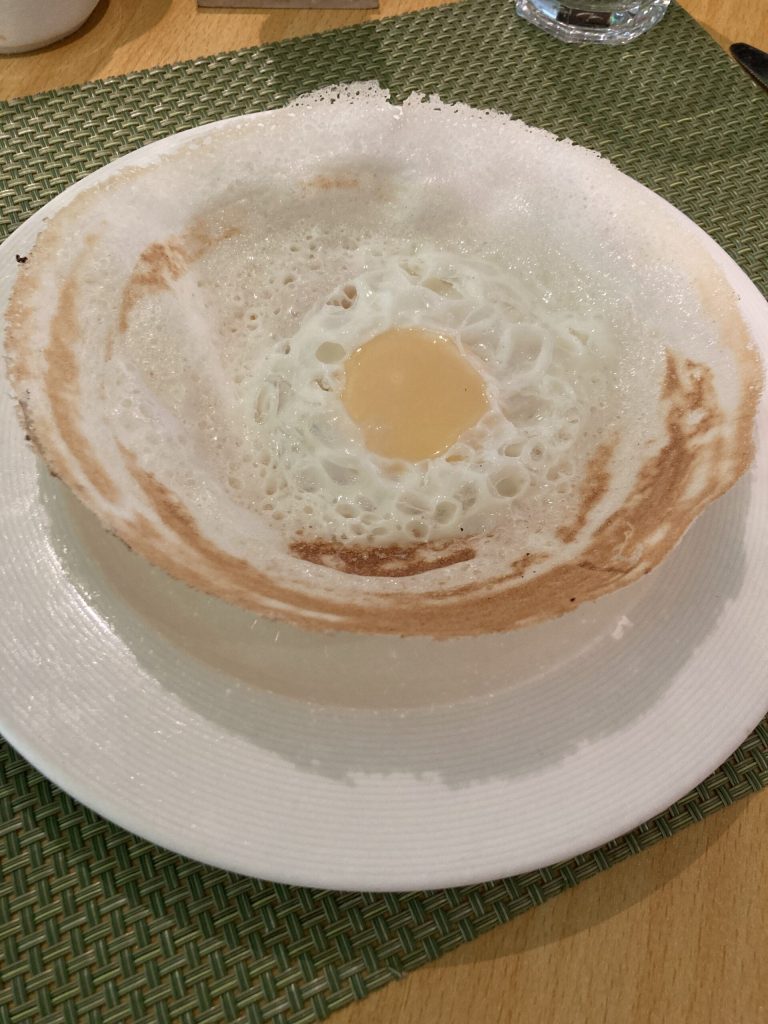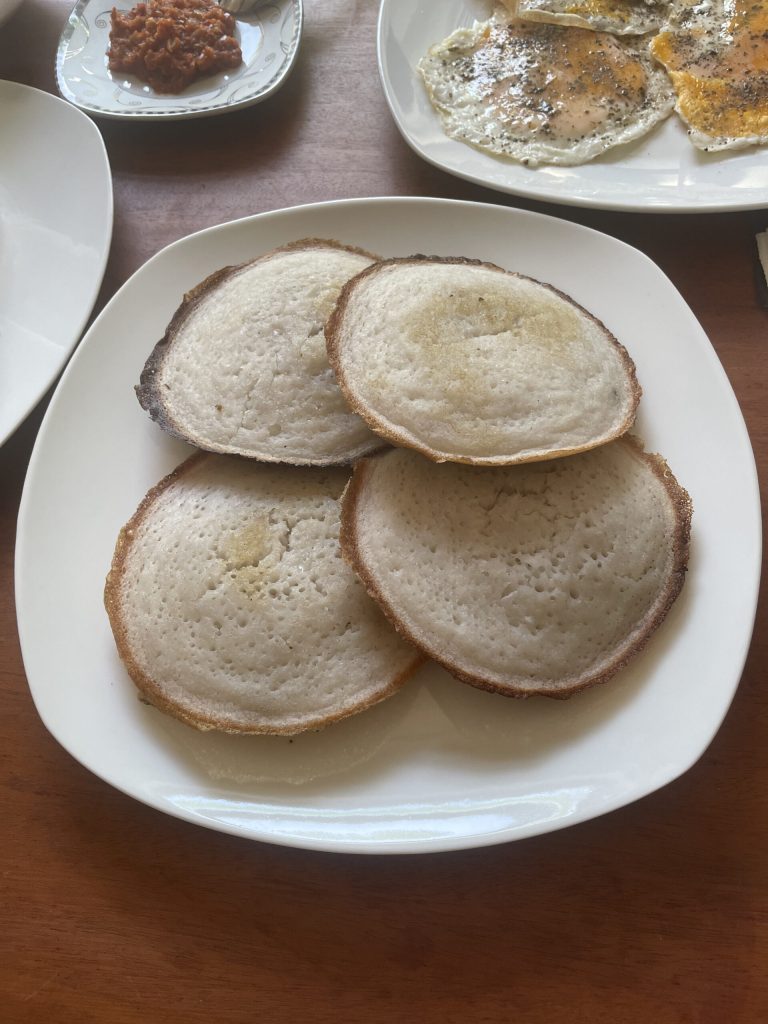I have already talked extensively about my recent trip to India, in November 2019, right within the blog, as well as about the Indian cuisine to which I dedicated a column, but Indian gastronomy is so vast that it is impossible to exhaust it in a single trip.
So once I returned, I had the opportunity to try the appam (or hopper), which I had not tasted on the first trip.
This is bread much more consumed in the Kerala area and Sri Lanka.
A bread made from fermented rice batter, cooked on a stone plate called in some areas “Kallappam”, where kall ((TA) கள்) stands for the liquid that originates from the fermentation of coconut palm flowers.
One of the few “Indian breads” I can eat, being made of rice and not wheat flour, therefore gluten-free.
There are different types of appam, among them the plain hoppers get their “bowl” shape from the small pan in which they are cooked, the Appachatti.
And it is the recipe that follows, with rice, yeast, salt, and a bit of sugar.
They are considered the base for all others and have a neutral taste, served with spice condiments, in the Kerala area with Kadala (a chickpea curry sauce), lamb and stewed vegetables or fried eggs, or with sugar and coconut milk.
Other variations are:
with egg (egg hoppers), with milk or coconut cream (milk hoppers), with palm syrup (honey hoppers), with metal spirals of curled rice noodles (string hoppers), with rice flour, with raw sugar and clarified butter ghee (neyyappam).
These were tasted at the Radisson Blu restaurant in Kochi and the egg hoppers at the bottom in Kandy, in Sri Lanka, during our November 2025 trip.

- Difficulty: Medium
- Cost: Very cheap
- Rest time: 11 Hours
- Preparation time: 10 Minutes
- Portions: 10 units
- Cooking methods: Stovetop
- Cuisine: Indian
- Seasonality: All seasons
Ingredients
- 7.05 oz rice
- 1 cup boiled rice
- 1 tbsp urad dal (white)
- 1 tsp sugar
- 6 oz coconut milk
- to taste coconut oil (or ghee)
- to taste salt
- eggs (optional, 1 for each appam)
Preparation
Soak the rice in a bowl of water for 3 hours, then drain.
Mix urad dal, sugar, and 2 tablespoons of water in a bowl and let ferment for 1 hour.
Place the drained rice in a blender, add the cooked rice and 6 oz of coconut milk, and blend.
Mix and let rest for 8 hours. Add salt.
Heat a small pan greased with coconut oil or ghee.
Add a ladle of mixture and cook until it separates from the surface of the pan.
If you want to try the appam with an egg in the center, just pour an egg into the center of your appam a few moments after pouring the mixture into the pan.

Neyyappam, with sugar and ghee.

The ready-made mix available in Indian supermarkets :
Affiliate link #adv
Affiliate link #adv
This is the small pan in which they are cooked: the Appachatti, you can find a similar one PAN NON-STICK APPAM also online.
What is the Sri Lankan version of appam?
Appa
are cooked on a flat plate or non-concave pan.
Not fully fermented, or with less coconut milk compared to the Indian version.
Cooking on a flat plate → fewer edges, flat shape.
Sometimes used to make rolls or fillings.
These are the basic version: thin and crispy at the edges, soft in the center, prepared with a fermented batter made from rice flour, coconut milk, and yeast or natural fermentation.
When an egg is added to the center during cooking, they become biththara appa.
The small differences with the Indian version:
Fermentation: sometimes with yeast, sometimes natural fermentation or with toddy (palm wine).
Consistency: Slightly denser and chewier in the center
Flavor: more neutral or tending to sweetness (if sweet)
In the photo, those tasted during my trip to Sri Lanka in October 2025.
What is white urad dal?
The White Urad Dal is a peeled and split legume, also known as “peeled black gram bean” or “white black lentil”.
It is the light inner part of the black gram bean (or urad), which after peeling has a delicate flavor, creamy texture, and is widely used in Indian cuisine for dishes like dal makhani, dosa and idli.

